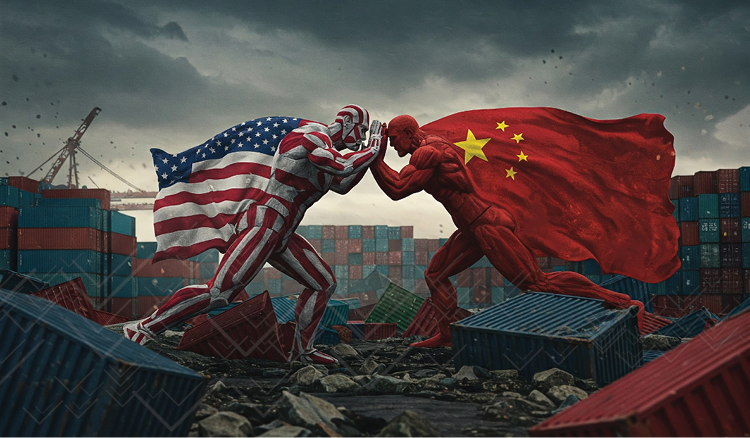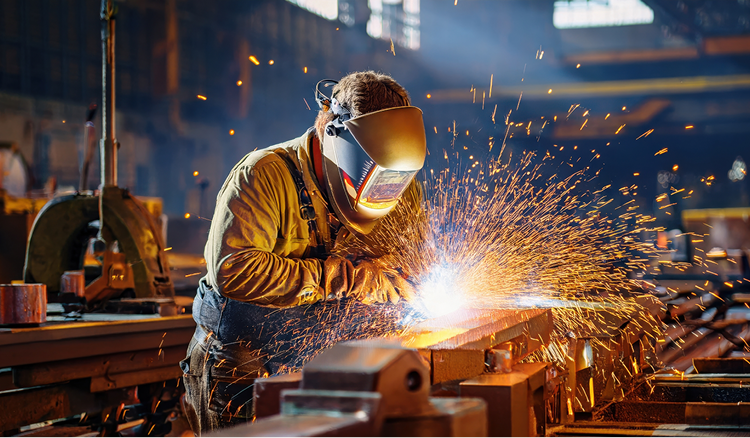The Pressure That Creates Progress: Why Those Who Move First Win the Most
Change rarely comes from comfort. It comes from pressure, irritation, and constraint—forces that demand a response. Businesses don’t change when everything is stable and predictable; they change when external forces make inaction impossible. The companies that endure the least amount of pain during disruptions are the ones that move first, while those who wait too long are left scrambling. In every major shift, there are two types of businesses: those who prepared before the storm and those who reacted too late.
The companies that adapt first don’t just survive; they capture market share, drive innovation, and cement themselves as leaders. Those that hesitate become irrelevant, outpaced, or acquired by the competition. The world does not wait for those who are slow to adjust—it rewards those who embrace agility before they are forced to. Business leaders must understand that preparation is not a cost but an investment in future stability. You don’t have to like disruption, but you have to respect it—because it does not wait for you to be ready.
For decades, businesses have been built around cost efficiency rather than resilience, and that worked in a world where disruptions were rare. But today, economic and geopolitical volatility make long-term stability an illusion. The pursuit of low-cost labor and just-in-time supply chains has created vulnerabilities, making many companies fragile rather than strong. Supply chains have been stretched too thin, workforces have lost flexibility, and entire industries have been structured on outdated assumptions about predictability. Businesses that fail to adapt will be left exposed, unable to pivot when the next crisis inevitably arrives.
Then COVID hit.
The COVID Wake-Up Call: Who Learned, Who Forgot
The pandemic wasn’t just a health crisis—it was a moment of reckoning for global supply chains and workforce strategies. Suddenly, every assumption about stability collapsed. Labor availability became unpredictable. Shipping delays turned from weeks into months. Hiring cycles were thrown into chaos, forcing businesses to adapt—or collapse. Many companies learned the hard way that speed and agility were the real competitive advantages, not just cost savings.
For some, this was a wake-up call that led to action. They restructured their operations, reshored critical production, and built flexible workforce models that allowed them to scale with demand. These companies gained market share while their competitors hesitated. They didn’t waste time hoping for a return to normal; they built the infrastructure to thrive under uncertainty.
Others? They hesitated, waiting for conditions to improve. They suffered losses, missed opportunities, and struggled to keep up with shifting demand. Some didn’t make it at all. They relied on traditional hiring models that couldn’t scale fast enough, and when demand rebounded, they found themselves understaffed and overextended. By the time they reacted, the best opportunities had already been taken by those who moved first.
The worst part? Many businesses that successfully adapted during COVID have already forgotten these lessons. They returned to slow, inefficient workforce strategies. They abandoned the flexibility that saved them. They assumed the crisis was over and ignored the reality that the next disruption was just around the corner.
Now They’re Caught Off Guard Again
Fast forward to today, and many of these same businesses are struggling—again. But this time, it’s not a virus causing chaos; it’s a series of economic and political shifts that were entirely predictable. Many companies are now dealing with tariffs raising import costs, labor shortages due to immigration policy changes, ongoing strikes disrupting logistics, and unpredictable consumer demand making long-term hiring decisions even riskier. These challenges are not surprises; they are the new normal.
The companies that failed to learn from COVID are now scrambling once more—this time burning cash on expensive temp staffing, exhausting full-time employees with overtime, and watching competitors who built agility into their workforce take market share. These businesses had the opportunity to future-proof their operations, but they chose to return to outdated models instead. The consequences are now unfolding in real time.
Some businesses are beginning to blame the external environment for their struggles, but the real issue is their own failure to adapt. They didn’t build resilient supply chains. They didn’t implement scalable workforce solutions. They didn’t take action when they had the chance, and now they’re feeling the full weight of their decisions. Instead of making excuses, companies need to ask themselves a critical question: Are we positioned to handle disruption, or are we just hoping it doesn’t happen?
The Leaders Who Saw This Coming Are Thriving
History has shown that industries that fail to adapt get left behind. This isn’t a new story—it has played out over and over again. In the 1950s, U.S. Steel ignored the rise of the basic oxygen furnace, while Japan embraced the technology and slashed production time by 90%. By the time American steel companies responded, it was too late—they had already lost their dominance. In the early 2000s, retailers who adopted e-commerce early flourished, while those who dismissed it as a passing trend were left struggling to catch up.
The same principle applies today. The companies that built workforce agility into their operations after COVID are now thriving. They don’t fear labor shortages, supply chain disruptions, or demand fluctuations—because they can adjust in real time. They have learned that success isn’t about managing costs—it’s about maximizing throughput and revenue. They don’t wait for disruption to force them into change; they prepare in advance and take advantage of the opportunities that others miss.
Veryable Was Built for This Moment
The businesses that have partnered with Veryable aren’t scrambling to hire during peak seasons, they’re scaling effortlessly. They aren’t worried about tariffs and supply chain delays, they’re pivoting their production models with ease. While others are reacting to problems, they are already ahead of the curve.
What gives them this advantage? A flexible workforce strategy. Traditional hiring is too slow for today’s environment. Temp staffing is unreliable. Overtime leads to burnout and bottlenecks. Veryable provides a better alternative—a skilled, on-demand workforce that adjusts with demand, not against it.
- Expand production instantly when demand spikes—without overcommitting to full-time hires.
- Scale 3PL operations seamlessly to capture new business opportunities.
- Eliminate workforce bottlenecks before they happen instead of reacting to labor shortages.
- Retain top-performing operators and build a reliable, flexible labor pool.
- Use real-time workforce data to drive efficiency, not just cut costs.
The companies that win today aren’t the ones looking for the lowest labor cost—they’re the ones maximizing their operational capacity. Agility is worth more than efficiency because efficiency without flexibility is just fragility waiting to be exposed.
The Next Disruption Is Coming—Will You Be Ready?
Every executive has a choice to make, and it’s not theoretical—it’s a decision that defines which businesses thrive and which fall behind. In every industry, in every era, there are companies that see change coming and adapt before they are forced to. And then there are those who wait, reacting in crisis, always one step behind the market. The difference between them isn’t intelligence or resources—it’s the willingness to take action before the pain sets in.
For years, businesses have optimized for efficiency, focusing on cost reduction over adaptability. But the last few years have proven that efficiency without resilience is just fragility in disguise. Supply chains collapsed. Labor markets tightened. Entire industries found themselves unprepared for the reality of disruption. Yet some companies moved first, integrating flexible workforce strategies that allowed them to scale when others were stuck. They turned volatility into an advantage. They took market share while competitors were struggling to keep up.
And now, here we are again. The next wave of disruption is already unfolding—tariffs are shifting global trade, immigration changes are tightening labor supply, and industrial strikes are testing the limits of production. Some businesses will be caught off guard yet again, forced into last-minute hiring sprees, expensive overtime, and desperate temp staffing contracts that offer little consistency. Others will continue to run smoothly, scaling their workforce on demand, adapting in real-time, and making workforce constraints irrelevant.
Every executive has a choice...
✅ Move first. Build workforce agility now, capture market share, and drive revenue while others hesitate.
❌ Wait and suffer. React to the next disruption in a panic, while more prepared companies take the lead.
The cost of inaction is always greater than the cost of preparation. The best time to build resilience was before the crisis. The second-best time is now.
Veryable isn’t just a labor solution—it’s a competitive advantage. It’s what separates the companies that scramble from the ones that dominate. The question isn’t if your business will face another disruption. It’s whether you’ll be ready when it happens.
To get started, create your free business profile or contact your local office. If you'd like to learn more about the Veryable solution, visit our homepage for executives.
Previous Posts
The Labor Crisis No One’s Talking About: Wasted Skill, Not Missing People
The Future of Manufacturing and Logistics
Create a free business profile today to explore our platform.






